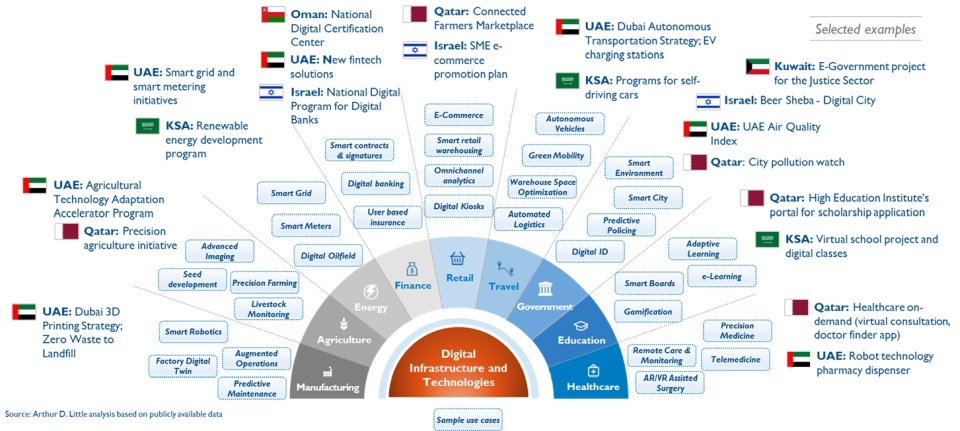Industry Thought Leadership
Digitizing With “Purpose”
September, 2020Proven direct linkages between “digital” and SDGs
Globally economies have made significant progress on the Sustainable Development Goals (SDGs). Yet, even at the start of 2020, no country was on track for achieving all SDGs and COVID-19 has been an unexpected set-back with severe short-term negative impacts on most SDGs.
In the context of COVID-19, digital infrastructure and technologies when deployed and leveraged strategically and used responsibly, are undeniably powerful tools to further SDGs. Fundamentally, digital provides access to information and services, improves productivity and enables cost and time savings, and if the infrastructure and technologies can be used to provide access equitably, they can drive societal progress and efficiency, ultimately building more sustainable economies that are potentially more resilient to even pandemics.
Digital access is positively correlated with 65% of the SDGs across all development levels (developed regions, developing regions, Least Developed Countries) and geographies. South Korea is well known as one of the few countries that has successfully climbed the economic ladder by embracing technology. South Korea scores especially high on measures of technological adoption and diffusion – higher even than the US. Not surprisingly, South Korea has relatively high performance across all SDGs.
South Korea today is a technologically intensive society, and that has almost certainly made a difference in the context of the pandemic, particularly when it has come to monitoring localized risks and containing the spread of the virus. From the very beginning of COVID-19, the South Korean government released the detailed trajectory of patients, which included patients’ recent movements, places to stay, timelines of movements, and whether they were wearing masks. They were able to do this by using location information from mobile phones and cars, security camera footage, and credit card records.

Identifying the right digital use cases to adopt
To drive inclusive and sustainable prosperity, digital technologies can be leveraged across all industries, to enable myriad of use cases as highlighted in Figure 1 below. By identifying and enabling high impact digital use cases across industries most relevant for the nation, governments can maximize the impact of digital on their SDGs.
Middle East countries to varying degrees, have embraced digital technologies as consumers and have policies and initiatives in place to achieve SDGs. Non-exhaustive examples of selected digital initiatives which support SDGs by industry are highlighted in Figure 1.
The virtual school project in the southern border of the KSA is a notable example, this initiative involves virtual digital classes launched for schools to ensure the continuation of education. Such digital education initiatives along with digital health and e-government services are widely seen across the GCC countries. Smart technologies that drive efficiencies in production and consumption such as 3D printing and Smart grid projects in UAE, precision agriculture in Qatar and renewable energy programs in KSA are all supporting SDGs.
Examples, such as UAE’s Agricultural Technology Adaptation Accelerator Program, which fosters the adoption and development of sustainable technologies to promote agriculture in marginal environments through an interactive platform, are much less rare. This reflects the efforts of the UAE government to establish the country as a world-leading hub in innovation-driven food security. Initiatives such as these have enabled UAE to achieve a 10-place leap on the Global Food Security Index, moving from 31st rank in 2018 to 21st rank in 2019.
The key hurdles that are preventing countries in Middle East from achieving SDGs are shortcomings in institutional mechanisms that deliver SDGs, insufficient clarity on benefits, gaps in the evidence base, and lack of earmarked and adequate financing. Digital technologies can help alleviate these challenges too as nations can establish digital platforms to collaborate between the entities better, and develop tools to closely track and monitor the outcome of various initiatives. While it cannot directly address the financing gap, digitalization can help optimize investments and bridge the funding gap by employing innovative digital financing technologies and encouraging private sector participation.
Digital paradox exists but must be managed effectively by the governments
The impact of digital on the SDGs may not be all positive, there are downsides that need to acknowledged and acted upon. The emergence of new technologies, such as artificial intelligence, robotics, blockchain, and especially their convergence is expected to disrupt many existing paradigms and bring about a radical change. For example, automation may negatively impact the labor market. Whilst new technologies are expected to improve the employment structure such as create jobs in computer and data science, considerable re-skilling of large parts of the population is crucial to truly benefit from this. Technology capability development in particular is a major challenge faced in the Middle East and new technologies may further exacerbate inequalities and generate negative externalities.
New policies and measures are critical to navigate and steer this change into a direction that benefits the SDGs individually. This requires more awareness and adaptability by governments which adds another layer of complexity to the implementation of the SDGs. The importance of coordinated whole-of-government action with cooperation among countries at a regional level, now acquires more heightened importance where even developed regions feel the need to act together.

